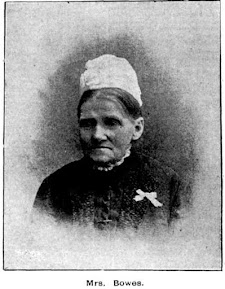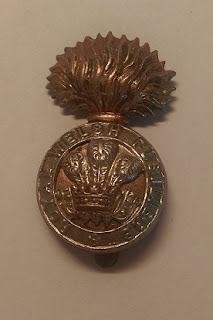The wreck of a supply ship and the discovery of an island
Last weekend I watched the reinternment of Matthews Flinders in the church in Donnington, Lincolnshire, England, his hometown, over 200 years after his death and original burial in north London.
How could there be a
connection with Rookwood you may ask, well that is the subject of this week's
blog; it begins with this man....
CAPTAIN GAVIN (GUY) HAMILTON
Gavin or Guy as he was
colloquially known was born on the 5th of October 1760 in Kilbride, Lanark,
Scotland to John Hamilton and Elizabeth (nee Anderson). He was the second son
of their union.
His early details are a
little sketchy but we know he married Betsey prior to 1794 and was in India as
his son, John Guy, was born in Calcutta. I am surmising that Gavin was in the
Navy at the time posted to that continent.
The fledgling colony was
having great difficulty from the time of the First Fleet in 1788 to provide
food and provisions for all. Most of the time, those in charge anxiously awaited
the next fleet of convict ships for supplies that were often inadequate or
spoiled however assistance came via ships arriving from India from 1793.
During the next thirty years over a third of all ships arriving in NSW were
Indian merchant ships.
The “Sydney Cove” was built in Calcutta under the
name of Begum Shaw. The agents were the firm of Campbell and Clark (previously
mentioned in the blog relating to Florence Bravo’s grandfather Robert Campbell
Junior). When the firm purchased her, they renamed her the Sydney Cove and
retained her owner and master Gavin Hamilton, providing her with
cargo consisting of various provisions to be sold upon arrival.
The ship departed Calcutta on the 10th of November 1796,
encountering heavy seas in December that forced a leak, further bad weather
increased it and by February off the east coast of Van Diemen’s Land the leak required
bailing efforts.
On the 9th of February with a real danger of sinking, Hamilton
decided to ground the vessel on the island now known as Preservation Island. He
chose a sheltered location so all were able to access the shore easily, saving
most of the cargo. The cargo was a varied one with Chinese porcelain, chests of
tea and kegs of tobacco, boxes of soap and candles but a large amount of
alcohol; 105 casks of Bengal rum, 12 cases of Gin and Brandy etc. Hamilton had
the salvaged rum stored safely out of the crew’s reach.
List of some of the cargo - display in Inveresk Museum Launceston - author's own collection
Several days were spent building up a long boat to dispatch her to Port
Jackson some 750km away for assistance. On the 28th of February, a
party of seventeen men set off, led by the first mate Hugh Thompson, with
William Clark who had been in charge of the cargo on board, with three European
seamen and twelve Indian sailors. They hadn’t gone far when near Ninety Mile
Beach they were wrecked, the only option left to them was to walk along the shoreline all
the way to Sydney some 600kms away.
They set off on the 15th of March and survived on dry rice and
small fish they caught. For the first five weeks they did not encounter any
First Nations people but were weaken by their ordeal. On the 26th of April the depleted group encountered friendly natives who supplied them with
fish but later that day came across a hostile group who sent spears flying and
injured three of the party. Nevertheless, the small party continued on until a
small fishing boat south of Botany Bay on the 15h May 1797 saw three men and
took them to Sydney barely alive. It was reported that Hugh Thompson had died
of his injuries from the encounter with the agitated group of local first nations
peoples.
Mr Clark had kept a diary and was able to advise Governor Hunter of coal
being noted in the area now known as Coalcliff between Sydney and Wollongong.
Immediately the schooner Francis and sloop Eliza were dispatched to
Preservation Island to collect the people remaining there and salvage the
ship’s cargo. On the return journey the Eliza was wrecked with the loss of her
crew and eight of the Sydney Cove survivors! Upon his arrival in Sydney, a
weakened Gavin Hamilton reported that the survivors had dined on mutton birds
but also that he had noted the strong south-westerly swell and the tides were
indicative of a channel linking the south Indian and Pacific Oceans meaning that
Van Dieman’s land was more than likely an island.
There were more salvage operations aboard the Francis where colonies of
seals were observed which brought about the sealing industry in the area.
On board the third voyage of the Francis was Matthew Flinders who was
assigned to make geographical observations. In 1798 he circumnavigated Tasmania
with George Bass in the Norfolk. The discovery of this strait meant a week
could be shaved off the journey from India to Sydney significantly increasing the
livelihood of livestock and other perishable cargo arriving in good condition.
In 1801-103 Matthew Flinders circumnavigated Australia in the HMS
Investigator.
Captain Gavin Hamilton did not recover well once he arrived in Sydney in
July 1797; the six-month exposure on the bleak barren island had played a great
toll on his constitution and he died in Sydney on the 20th of June 1898.
He left a wife and three-year old son to mourn his loss.
Captain Hamilton was initially buried in the St Andrews Burial ground
where Town Hall now stands; his headstone erected by the Campbells and remains
then moved to Devonshire Cemetery when land was requestioned for the new Town
Hall building. In turn his remains and headstone were moved to the old Anglican
area of Rookwood in 1901 upon resumption of the Burial ground for the extension
to Central Railway Station.
The headstone was removed some years ago and placed in the Rookwood Crematorium
Museum for safe keeping and a memorial plaque was placed on his grave plot in
the cemetery.
The wreck of the Sydney Cove was especially significant in that coal was
found in the Illawarra region, seals were in abundance and an
industry soon began and that Van Diemen’s Land was discovered to be an island.
Matthew Flinders soon after circumnavigated Australia and produced the first
complete map of Australia in 1814just before his before his untimely death.
There may not be a huge connection to Matthew Flinders from the wreckage
of the Sydney Cove but a quite significant one.
The wreck of the Sydney Cove was found in 1977 lying partly covered by sand in about 3-6 metres of water and excavations were made to recover artefacts and some timbers. The survivor’s camp was excavated in 2002. A re-enactment of the epic walk was carried out in 1997 in the bicentenary year.
A few years ago, I was lucky enough to visit the Museum of Inveresk in
Launceston Tasmania and view the Sydney Cove anchor and many other artifacts
found in the wreck.
For today’s blog I have utilised references from ancestry.com, Wikipedia,
The Navy League Journal amongst other google references.
If you have visited the Museum in Launceston or have other insights about the
wreck and its legacy, please don’t hesitate to add a comment below or at the
group Facebook page found under
Rookwood Cemetery Discoveries
Or send me a message via
Until next week










Great read
ReplyDeleteThank you I couldn't let the recent re-internment of Flinders and his connection with Hamilton go unnoticed!
DeleteLove this story. Very interesting.
ReplyDeleteGlad you like it - so many interesting connections and stories to discover still!
Delete